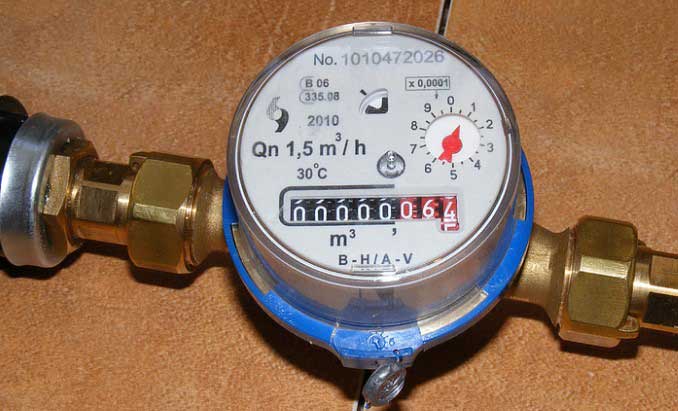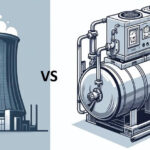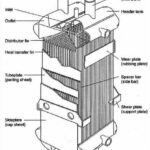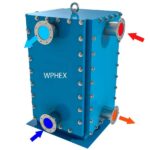Flowmeters are used in a wide range of industries to measure the rate at which fluids or gases are flowing. There are several flowmeter types available, each with its own advantages and disadvantages.
Flowmeter types
Here are some of the most common flowmeter types used in industry:
- Differential Pressure (DP) Flowmeters: This is the most commonly used type of flowmeter, which works by measuring the pressure drop across an obstruction inserted in the fluid flow. It is suitable for a wide range of applications and is relatively inexpensive.
- Turbine Flowmeters: These flowmeters measure the flow rate by measuring the rotational speed of a turbine placed in the fluid flow. They are highly accurate and are suitable for a wide range of liquids.
- Electromagnetic Flowmeters: This type of flowmeter uses Faraday’s law of electromagnetic induction to measure the flow rate of conductive liquids. It is commonly used in water treatment, chemical processing, and food and beverage industries.
- Ultrasonic Flowmeters: These flowmeters use sound waves to measure the flow rate of liquids or gases. They are non-invasive and can be used for a wide range of applications.
- Coriolis Flowmeters: These flowmeters measure the mass flow rate by measuring the Coriolis force exerted on the fluid. They are highly accurate and suitable for a wide range of applications, including high viscosity fluids and gases.
- Thermal Mass Flowmeters: This type of flowmeter measures the mass flow rate by measuring the heat transfer between a heated element and the fluid. They are suitable for low flow rate applications and for measuring the flow rate of gases.
- Vortex Flowmeters: These flowmeters use the principle of Karman vortex street to measure the flow rate. They are highly accurate and suitable for measuring the flow rate of gases and liquids.
- Positive Displacement Flowmeters: These flowmeters measure the flow rate by capturing a fixed volume of fluid and then measuring the time it takes to capture subsequent volumes. They are highly accurate but can be expensive and are typically used for low flow rate applications.
- Variable Area Flowmeters: These flowmeter types use a tapered tube and a float to measure the flow rate. The fluid flow causes the float to rise or fall, and the position of the float indicates the flow rate. They are simple to use and relatively inexpensive.
- Weir Flowmeters: These flowmeter types use a weir, which is an obstruction placed in the flow of a liquid, to measure the flow rate. The height of the liquid passing over the weir is measured, and the flow rate is calculated based on the height and other parameters.
- Magnetic Flowmeters: These flowmeter types use a magnetic field to measure the flow rate of conductive liquids. They are highly accurate and can be used for a wide range of applications, including those with corrosive or abrasive fluids.
- Clamp-on Ultrasonic Flowmeters: These flowmeter types are similar to ultrasonic flowmeters, but they do not require insertion into the fluid flow. Instead, they are attached to the outside of a pipe and use ultrasonic waves to measure the flow rate. They are non-invasive and can be used for a wide range of applications.
- Insertion Flowmeters: These flowmeter types are designed to be inserted into a pipe or duct and measure the flow rate by sensing the velocity of the fluid at specific points. They are typically used for larger pipes or ducts where installation of a full-bore flowmeter would be too expensive or difficult.
- Variable Differential Pressure (VDP) Flowmeters: These flowmeter types use a constriction in the flow path and measure the differential pressure across the constriction to determine the flow rate. They are typically used for low to medium flow rates and can handle a variety of fluids.
- Turbine Insertion Flowmeters: These flowmeters are similar to turbine flowmeters, but they are designed to be inserted into a pipe. They use a rotating turbine to measure the flow rate and can be used for liquids or gases.
- Impeller Flowmeters: These flowmeter types use a rotating impeller to measure the flow rate. The impeller is inserted into the fluid flow and rotates at a speed proportional to the flow rate. They are typically used for liquids and can handle a range of flow rates.
- Oscillating Piston Flowmeters: These flowmeter types use a piston that oscillates back and forth to measure the flow rate. They are highly accurate and suitable for a wide range of fluids, including high viscosity fluids.
- Positive Displacement Bellows Flowmeters: These flowmeters use a bellows to capture a fixed volume of fluid and then measure the time it takes to capture subsequent volumes. They are highly accurate and can handle a wide range of fluids and flow rates, but they can be expensive.
- Venturi Flowmeters: These flowmeters use a tapered section of pipe to create a pressure differential and measure the flow rate. The fluid flows through a narrow throat in the center of the venturi, which causes the velocity of the fluid to increase and the pressure to decrease. The pressure differential between the inlet and the throat of the venturi is measured to determine the flow rate. Venturi flowmeters are commonly used for larger pipe sizes and high flow rates.
- Orifice Flowmeters: These flowmeters use an orifice plate, which is a flat plate with a hole in the center, to create a pressure differential and measure the flow rate. The fluid flows through the orifice, and the pressure differential between the upstream and downstream sides of the orifice is measured to determine the flow rate. Orifice flowmeters are simple, inexpensive, and widely used for a variety of applications, but they can be less accurate than some other flowmeter types.
Both venturi and orifice flowmeters rely on creating a pressure differential to measure the flow rate, but they differ in their design and the level of accuracy they offer. The specific flowmeter that is best suited for a given application will depend on factors such as the flow rate, the fluid being measured, and the required level of accuracy.
There are numerous flowmeter types used in industry, and new flowmeter types are continually being developed. However, the flowmeter types that are mentioned so far are some of the most common and widely used in various industries. Depending on the specific application and fluid being measured, some flowmeters may be more suitable than others. It’s important to select the right flowmeter based on the specific needs of the application to ensure accurate and reliable measurements.
External links
Gas sonic velocity calculator – Calculates the sonic velocity of a specified gas flowing in a pipe.











